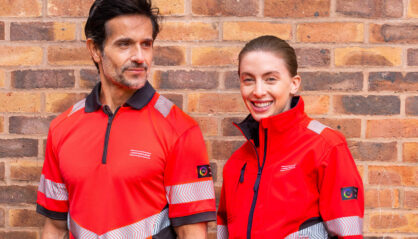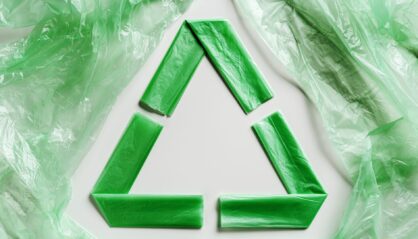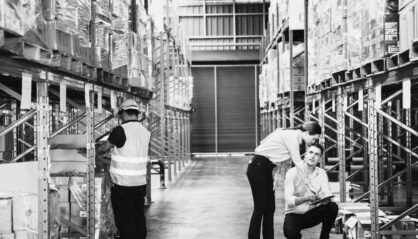Celebrating World Environment Day With Sustainable Workwear

World Environment Day is held on the 5th June every year, and is a global initiative that helps to raise awareness of critical environmental issues that are harming our planet.
Last year, the focus of World Environment Day was on plastic pollution – highlighting the impact that single-use items have on the planet.
This year, focus has shifted to land restoration, exploring ways to return large amounts of land back to their natural state.
Landfills are a major focus of World Environment Day 2024. Not only do they destroy natural wildlife habitats, they contribute massively to greenhouse gas emissions and the rising global temperatures.
In this article, we will be talking about how clothing waste contributes to the landfill problem, and how choosing custom, sustainable work uniforms can help reduce clothing waste and align with your environmental and sustainability goals.
The Impact Of Clothing & Workwear On The Environment
Did you know that 350,000 tonnes of used but still wearable clothing goes into landfill in the UK every year?
With the rise of fast fashion, clothing trends are now extremely short-lived, meaning fabric waste is at an all time high. While uniforms aren’t considered ‘fashion items’, they can still become redundant or outdated and contribute to the landfill problem.
There are many reasons why work uniforms might end up in landfill. In a lot of job roles, uniforms might typically be worn for many days in a row, leading to natural wear and tear. And in certain industries, uniforms might be prone to stains, tears or rips. And in some instances, a brand refresh might cause uniforms across an entire company to become obsolete.
Sustainable disposal of work uniforms can be challenging. Many charity shops won’t accept them, and even if they did – it could pose a security risk for your business by allowing fraudulent representation of your business by the new wearer.
So unfortunately, a lot of these worn out or damaged uniforms end up in landfill.
So, why are landfills harmful to the environment?
Landfills get filled with items that will take many years to decompose. To create these sites, many wild areas are required to be cleared. This can affect the natural equilibrium massively, and lead to habitat loss for local wildlife.
Additionally, landfills produce methane – a greenhouse gas that contributes to climate change; and leachate liquid which can contaminate nearby ponds, lakes and streams.
By taking a thoughtful, sustainable approach to uniform design and looking for ways to more responsibly dispose of damaged or outdated uniforms, we can help reduce the amount of textiles that end up in landfills and protect our planet.
The Importance Of Sustainable Workwear
To reduce the amount of fabric waste that is discarded year on year, it’s important to find new ways to recycle unwanted uniforms.
As discussed above, many charity shops or second-hand organisations will not take old workwear, and even if they did, this could lead to bigger problems later on.
So, what is the best way to benefit the planet when thinking about uniforms?
Firstly, demonstrating your commitment to sustainability by choosing eco-friendly workwear is a great start. Uniforms can be classed as being more ‘sustainable’ in a number of different ways – including the material used. Creating custom uniforms from recycled fabrics, ‘means that all or some of the product is made from reused materials’. This may involve repurposing polyester garments that have blended recycled plastics or utilising fabric from other items to create the uniform. However, some clothing items can also be created with organic materials, which also have a low impact on the environment. Organic materials are also an eco-conscious option, as they typically use less water or benefit from better land management.
In addition to selecting sustainable fabrics, businesses can also choose suppliers who prioritise eco-friendly practices in the design and manufacture of work uniforms.
A work uniform supplier can be carbon neutral, where they aim to offset the amount of carbon dioxide emitted during the process of designing, manufacturing and supplying uniforms.
Many companies are also choosing work uniform suppliers who ethically manufacture their products, addressing social issues such as avoiding child labour, paying above the minimum or living wage and maintaining proper health and safety standards.
JSD’s Commitment To Sustainability
At the core of our business is our commitment to the environment through the creation of custom uniforms, prioritising sustainability every step of the way.
Our design process focuses on affecting the planet in as minimal a way as possible. We want to protect the natural world as well as promote sustainability with every design. In doing so, we have adopted manufacturing processes that aim to reduce carbon emissions, conserve energy and water, minimise waste generation, and utilise eco-friendly materials.
How uniforms are disposed of is just as important as how they were created. From eco-aware designs and responsible manufacture to planned end-of-life disposal, we are dedicated to ensuring that your custom sustainable workwear can be recycled in the most sustainable way once you are finished with it.
When choosing to design a uniform with us, our services will also include a range of options for dealing with excess or outdated uniforms. JSD offers a number of choices for recycling or upcycling your current uniforms. Once you have decided on a plan going forward, we will be able to manage the entire process for you.
How We Help Businesses Decrease Their Carbon Emissions Whilst Improving Brand Identity
Given the high volume of fabric ending up in landfills, many companies are now adopting practices of upcycling their old uniforms and using recycled textiles.
When working with Eurostar, this was exactly the method we used. Eurostar were looking to develop their well-regarded brand further with their uniforms whilst also being a partner in the drive for more sustainable workwear. We created custom fabrics that were developed to express the unique Eurostar brand at the same time as boosting durability and aiding the responsible end-of-life recycling/disposal of the uniforms.
Another brand pushing forward to be more sustainable with their uniforms is Jet2. Our team here at JSD handle the entire operational life cycle of Jet2’s uniforms, tailoring services to the airline’s specific needs, from online ordering to predictive stock control and dedicated account management.
Also, Jet2 has continued to roll out several eco-friendly practices since our Sustainability Workshop with them in 2019, focusing on creating uniforms with recycled fabrics, durability care initiatives are in trial, and garment packaging has been reduced and replaced with recycled materials.
Currently, compostable packaging is also in development with suppliers throughout the supply chain, and design changes have been made to facilitate the end-of-life deconstruction of Jet2 garments for recycling. With Jet2, we also offer our take-back system, which we also extend to their seasonal staff’s workwear too.
How JSD Could Help Your Businesses Sustainability Goals
World Environment Day should act as a global reminder for the environmental challenges our planet faces, such as the impact of landfills destroying natural habitats and contributing to greenhouse gas emissions.
Addressing these challenges requires all of us to pull together, and make sure our businesses are helping to protect the future of our planet. And when it comes to the environmental impact of your work uniforms, JSD are on hand to help your business play its part.
We prioritise sustainability at every step of our uniform creation process – selecting eco-friendly materials, using ethical manufacturing practices that reduce carbon emissions and minimise waste, and advise on innovative recycling and upcycling end-of-life disposal options.
Contact our team today to learn how we can help you achieve your sustainability objectives while ensuring your uniforms are both functional and represent your brand perfectly.





